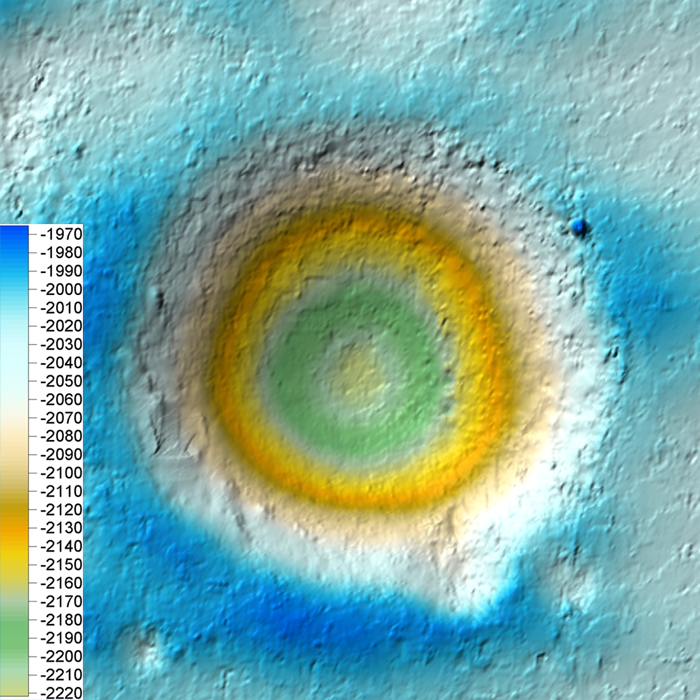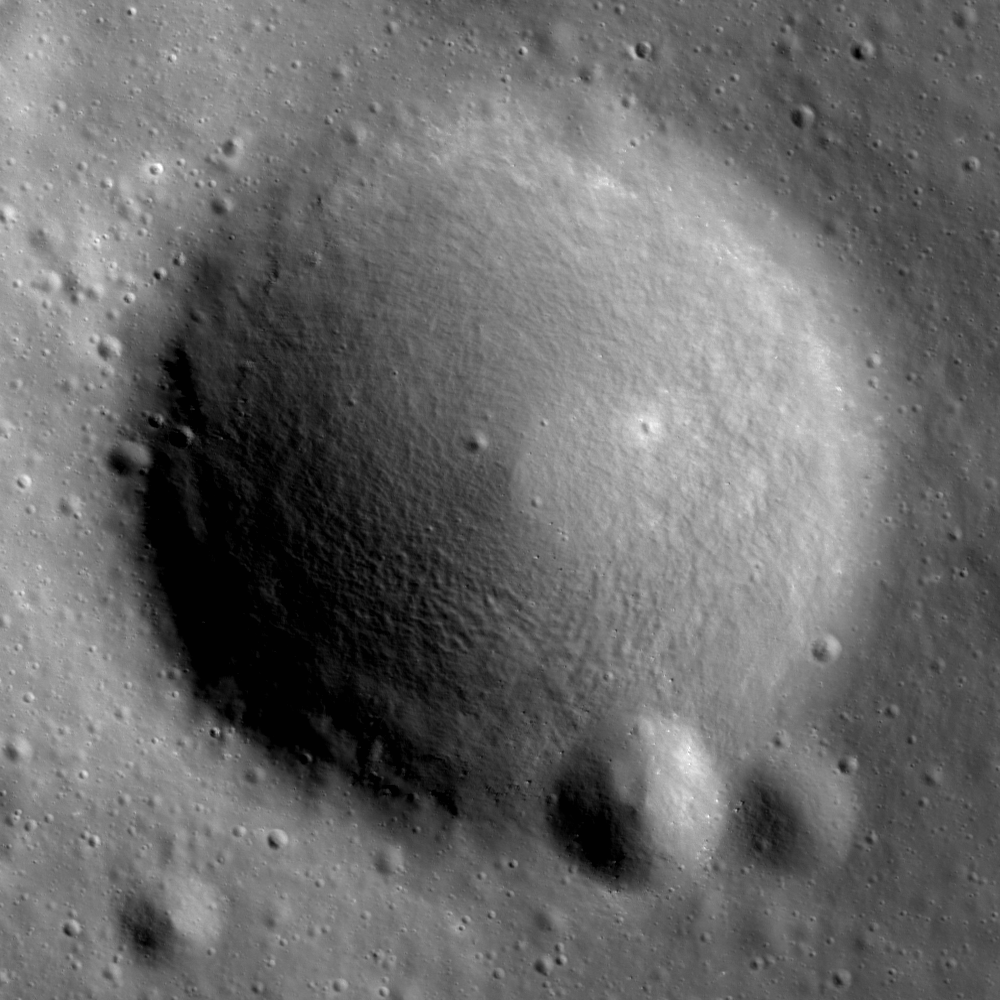
To produce a Digital Terrain Model (DTM) using LROC NAC images, you need at least two images of the same area taken from different orbits with off-pointing. The two oblique views result in parallax, which we can measure and convert into elevation measurements. Presto! You have a topographic map. Of course, it is not quite that easy. First, an analyst has to calibrate the images, pick absolute elevation points from LOLA laser profiles, pick a few points matching the images together, and then the automated software does the rest; almost, but analysts check the output and correct any errors that may have crept in during the automated processing.
Jitter, which is caused by minuscule vibrations in the spacecraft, can cause the resulting DTM to show wave-like patterns (below). So far only a small set of LROC NAC images have been found to be affected by jitter and research efforts are being focused to reduce the effects of jitter on the handful of DTMs that show this effect.
The final product, detailed topographic maps, provides scientists and engineers with a powerful tool to solve many problems. For example, when planning future human traverses at a specific site, topographic maps tell us where we can drive or walk, how much energy we will need, and what we can do at any given location. Over the next several years, LROC will collect hundreds of more stereo pairs over key exploration targets.
Published by Jordan Lawver on 12 August 2010

